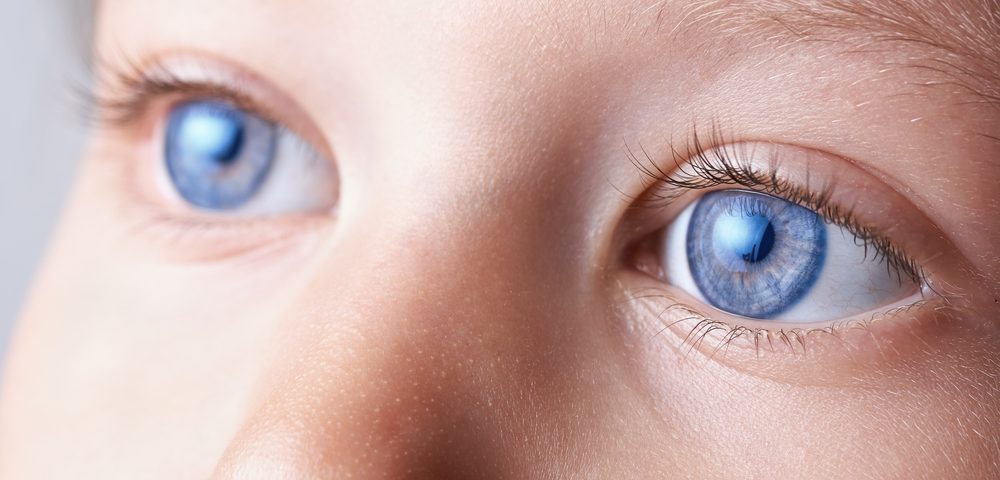Uveitis — inflammation of the eye — affects almost 20% of children with juvenile idiopathic arthritis (JIA), according to a study.
Findings revealed that while chronic uveitis affects mostly girls at younger ages (4 to 6 years old), acute uveitis is more prevalent among boys ages 10 to 12. These two groups also differed in their uveitis symptoms and JIA types.
The study, “Juvenile idiopathic arthritis-associated uveitis: a retrospective analysis from a centre of South Italy” was published in the journal International Ophthalmology.
JIA, the most common chronic rheumatic disease in children, affects more than joints.
Uveitis is an inflammatory condition that causes swelling and destruction of ocular tissues mainly in a part of the eye called uvea. It is the most frequent and severe extra-articular complication associated with JIA and typically develops within the first three years after diagnosis. However, in about 10% of the patients, uveitis appears before joint inflammation.
Despite therapy, uveitis can lead to vision loss, meaning early diagnosis and treatment are critical, especially because uveitis symptoms are often clinically silent.
A group of Italian researchers evaluated the prevalence of uveitis in children with JIA and explored related clinical and laboratory characteristics. The prevalence of ocular signs and symptoms was also determined and correlated with age.
The team defined acute uveitis as episodic events with limited duration, recurrent uveitis as repeated episodes separated by three months, and chronic uveitis when it was persistent and relapsed within three months after stopping treatment.
In total, 109 JIA patients, ages 3 to 16, were analyzed. They were followed at the Pediatrics Rheumatology and Ophthalmology Clinics of University Hospital in Messina, Italy, between January 2007 and December 2017.
Mean age at JIA diagnosis was approximately 5 years. More than half (66%) of the patient population had the oligoarticular form of JIA.
Results showed that 21 patients developed uveitis (19.3%), including 15 girls (71.4%). Uveitis first occurred around 2.5 years after diagnosis for 17 patients (80%). Only two cases presented with uveitis before developing JIA.
Researchers observed that uveitis incidence peaked in two age periods: from 4 to 6 (first subgroup) and from 10 to 12 (second subgroup). Patients in the younger group were all female, had oligoarticular arthritis, and developed chronic uveitis.
Of the children in the older group, 84% were male and had other types of JIA besides the oligoarticular form (50%), including polyarticular (16.3%), psoriatic arthritis (16.3%), and juvenile enthesitis-related arthritis, a type of JIA positive for the HLA-B27 marker (16.3%). Children in this group presented acute anterior uveitis, which refers to the anatomical localization of eye inflammation.
The younger uveitis group had a type of inflammation called white uveitis, characterized by a lack of evident symptoms, but with several signs observed on slit lamp examination. As for the older group, all patients had pain, photophobia (sensitivity to light) and “red eyes.”
Six eyes (28%, four eyes in the first subgroup, two in the second) showed reduced visual acuity. However, no differences in sight were found between chronic and acute cases.
All 21 patients were initially treated with topical cycloplegics and steroids. Only one child reached uveitis remission at that point. The other 20 underwent systemic therapy with prednisolone and methotrexate, leading to clinical remission in three children. The remaining 17 patients were then treated with infliximab (sold under the brand name Remicade, among others), after which one child achieved remission. The 16 remaining patients were switched to adalimumab (sold as Humira, among others), which resulted in remission in all cases to date.
“It could be concluded that uveitis is the most severe extra-articular complication of JIA, with a significant number of children still developing sight-threatening complications, associated with high prevalence of visual loss, despite therapy,” the researchers wrote.
“A close cooperation between paediatric rheumatologist and ophthalmologist is advisable for early diagnosis, following screening plans to be established according to risk factors for each patient, particularly focusing on age and clinical characteristics” they added.

